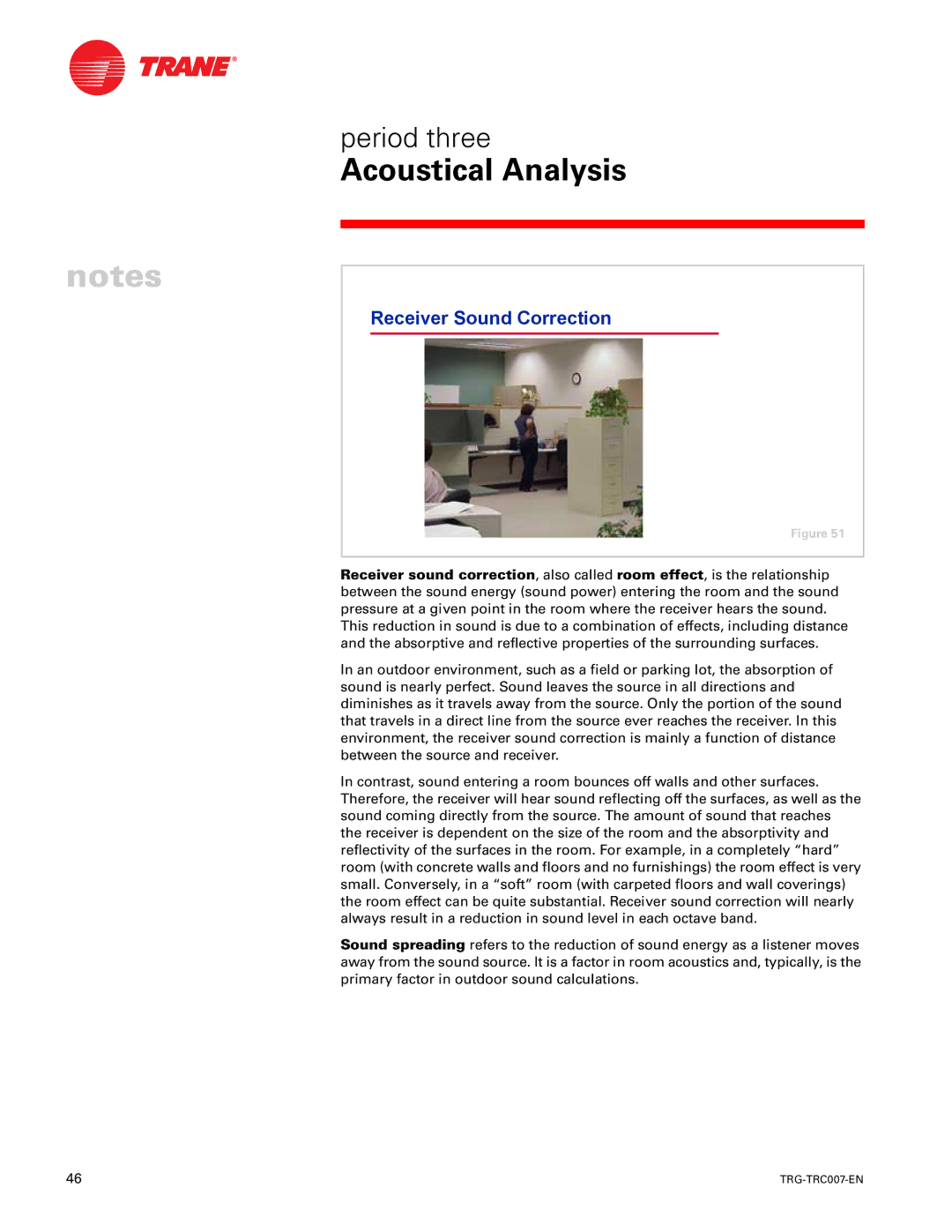
period three
Acoustical Analysis
notes
Receiver Sound Correction
Figure 51
Receiver sound correction, also called room effect, is the relationship between the sound energy (sound power) entering the room and the sound pressure at a given point in the room where the receiver hears the sound. This reduction in sound is due to a combination of effects, including distance and the absorptive and reflective properties of the surrounding surfaces.
In an outdoor environment, such as a field or parking lot, the absorption of sound is nearly perfect. Sound leaves the source in all directions and diminishes as it travels away from the source. Only the portion of the sound that travels in a direct line from the source ever reaches the receiver. In this environment, the receiver sound correction is mainly a function of distance between the source and receiver.
In contrast, sound entering a room bounces off walls and other surfaces. Therefore, the receiver will hear sound reflecting off the surfaces, as well as the sound coming directly from the source. The amount of sound that reaches the receiver is dependent on the size of the room and the absorptivity and reflectivity of the surfaces in the room. For example, in a completely “hard” room (with concrete walls and floors and no furnishings) the room effect is very small. Conversely, in a “soft” room (with carpeted floors and wall coverings) the room effect can be quite substantial. Receiver sound correction will nearly always result in a reduction in sound level in each octave band.
Sound spreading refers to the reduction of sound energy as a listener moves away from the sound source. It is a factor in room acoustics and, typically, is the primary factor in outdoor sound calculations.
46 |
|
